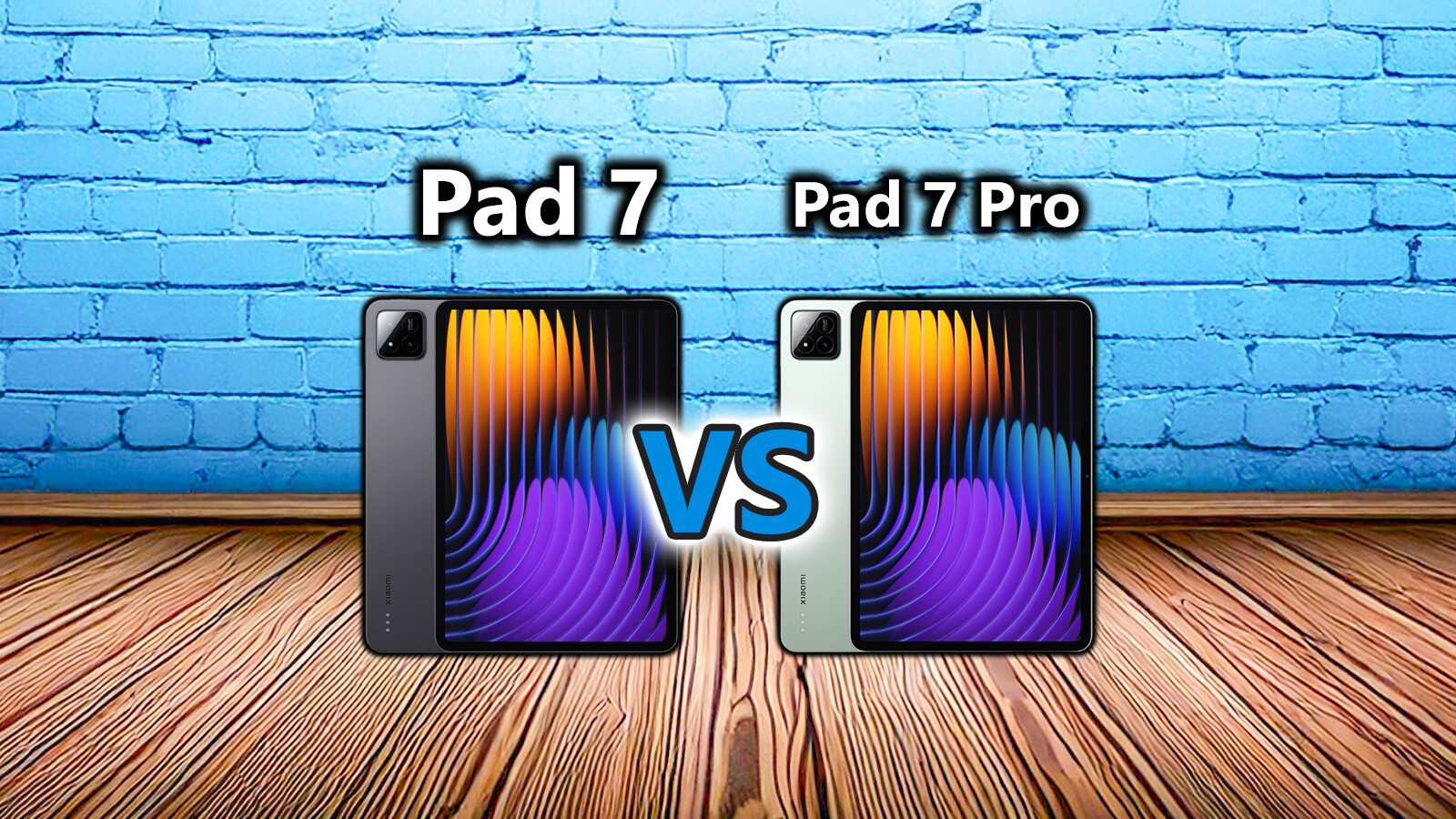The new Xiaomi tablets Pad 7 and Pad 7 Pro are here – and bring a lot of new features. Here we explain in detail how the two models differ from each other.

- There are only a handful of significant differences between the Xiaomi Pad 7 and the more expensive Pad 7 Pro.
- Among other things, the manufacturer has installed a faster processor and better cameras in the Pro model.
- There are no differences in the display, memory and many other equipment areas.
Most people in this country know the Chinese manufacturer Xiaomi particularly because of its affordable smartphones, which are often particularly impressive due to their price-performance ratio. But Xiaomi’s range includes many more devices – including tablets. The latest Xiaomi models from this product category are the Pad 7 and Pad 7 Pro. So that you can find the right model for you, we will show you the differences between the two devices here.
Size and weight
The two tablets cannot be distinguished from one another based on appearance or size. Both models come with dimensions of 251.2 x 173.4 x 6.2 mm. The weight is also the same – in both cases it is exactly 500 grams.
Display
Just as few differences can be seen between the two devices on the display. Xiaomi has installed an 11.2-inch IPS display in both the Pad 7 and the Pad 7 Pro, which has a resolution of 3,200 x 2,136 pixels, a maximum brightness of 800 nits and a refresh rate of 144 Hertz. A variable refresh rate with LTPO is not supported, but HDR10 and Dolby Vision are supported.
Processor and memory
The first major difference between the two Xiaomi tablets is the processor. In the Xiaomi Pad 7, the manufacturer uses a Qualcomm Snapdragon 7+ Gen 3, which is manufactured using the 4nm process. The more expensive Xiaomi Pad 7 Pro, on the other hand, gets the slightly faster Snapdragon 8s Gen 3.
Both devices can be configured with eight or 12 GB of RAM and 128 or 256 GB of internal storage; the Pro model is also available with 512 GB of storage. The 128GB models use UFS 3.1 storage in both cases, the other storage configurations are each served by faster UFS 4.0 chips.
Battery and charging
Xiaomi has installed an 8,850 milliamp hour battery in both the Pad 7 and the Pad 7 Pro. There is, however, a difference, namely the charging speed: While the cheaper Xiaomi Pad 7 can “only” be charged with up to 45 watts, the Xiaomi Pad 7 Pro supports fast charging with up to 67 watts.
Camera
The final difference between the two devices is the built-in cameras. The basic model Xiaomi Pad 7 has a main camera with a resolution of 13 megapixels and a sensor size of 1/3.06″. In the Xiaomi Pad 7 Pro, however, the main camera, which has a sensor size of 1/2.76″, has a resolution of 50 megapixels.
In addition, the more expensive model has a depth sensor with two megapixel resolution, which is missing from the cheaper device. The front camera of the Xiaomi Pad 7 has a resolution of eight megapixels, that of the Pad 7 Pro has a resolution of 32 megapixels. Only the Pro model supports video recordings at 4K at 60 fps; the Xiaomi Pad 7 stops at 4K at 30 fps.
Other differences
- The Xiaomi Pad 7 Pro supports WiFi 7 in addition to WiFi 6E, while the Xiaomi Pad 7 only supports WiFi 6E.
- A fingerprint sensor is installed in the Pro model. This is missing from the Xiaomi Pad 7.
- » Tipp: The best VPN providers for more security and data protection
- » Buy balcony power plant: Comparison of the best solar systems
Don’t miss anything with this NETWORK WORLDNewsletter
Every Friday: The most informative and entertaining summary from the world of technology!
Table of Contents







